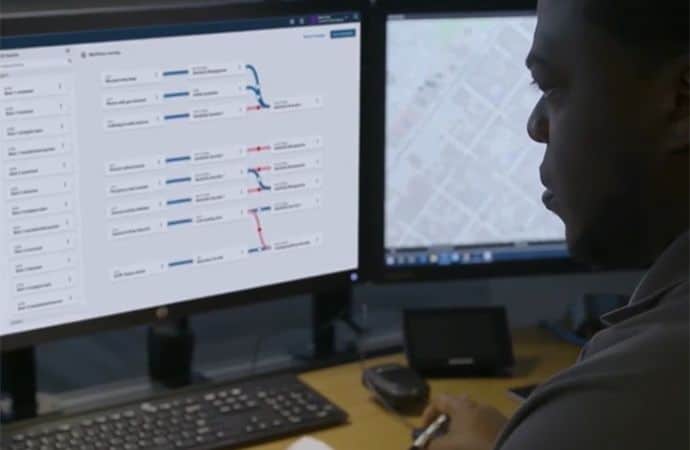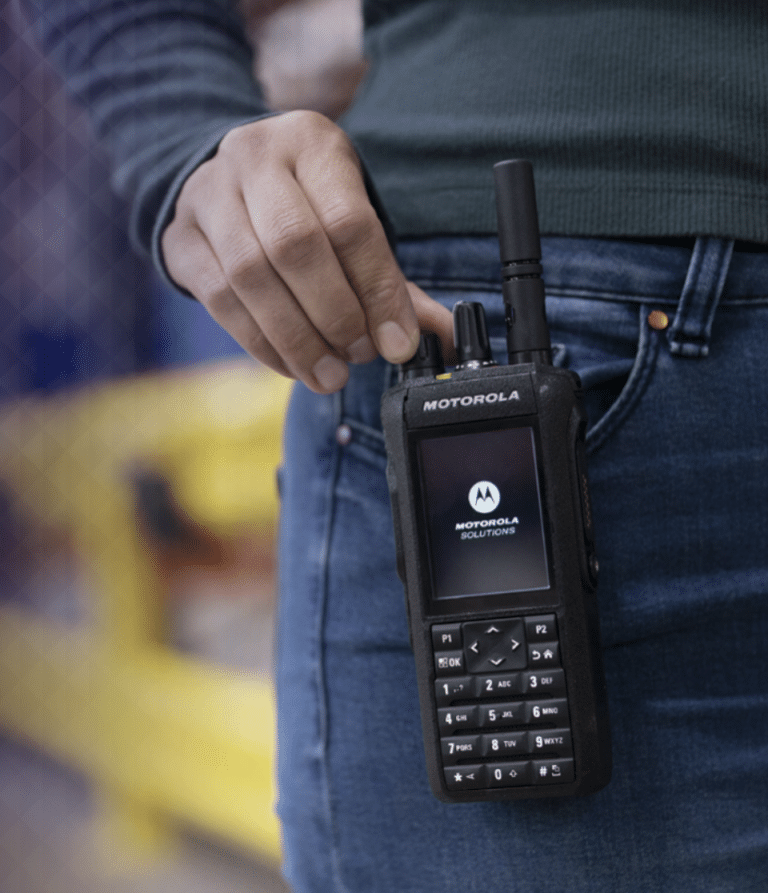Can Radio Frequency Identification (RFID) transform the way you work? If you’ve skipped over it in the past, now may be a good time for a second look. Technology once considered an out-of-reach luxury for many businesses is becoming more realistic on a path of portability.
Rise of New Options.
Wireless, automated tracking and management in a snap. When Radio Frequency Identification (RFID) technology debuted long ago, it seemed like magic. But realities like steep costs and limited application dashed hopes of an overnight productivity revolution across the board. Now things are changing. Design advances are breaking with RFID’s fixed tradition to make it more portable and practical for a wider array of business operations.
“RFID has a reputation for requiring a fairly significant amount of fixed hardware infrastructure, but now you can use the technology on a handheld device,” says Mike Markham, Commenco’s Director of Technology Solutions. “That’s opening important doors for businesses large and small.”
Handheld devices are bringing RFID into reach for more businesses.
Traditional handheld barcode scanners remain standard point-and-shoot tools for reading label data on everything from products and boxes to pallets and shelves. At the high end of the spectrum, fixed RFID hardware systems automatically read large amounts of data passing through wireless industrial pinch points, such as loading dock doors. Now, in between the two, portable RFID devices are finding their place.
“More and more handheld options are coming onto the market,” explains Markham, after years of watching RFID technology evolve. “They’re good tools and the price is coming down, which makes room for more applications that are useful to more businesses. Depending on your operational requirements, you don’t necessarily need to invest in a fixed system that isn’t as flexible as your business changes.”
Sleds Pull Particular Potential.
A fully loaded handheld device specifically designed for RFID still isn’t cheap, but there are more of them available these days, and that’s making pricing more competitive. Sleds are even less expensive, delivering critical affordability with valuable flexibility. Attach your handheld mobile computer and switch to RFID on the fly as tasks change.
“Your barcode reader suddenly becomes an RFID reader, giving you the ability to collect data without a direct line of sight. You can also read a volume of labeled items at once, not each item one at a time.”
Drop your computer into the sled and get back to work with RFID capabilities.
Turn on item-finder mode and your handheld RFID sled can detect a needle in a haystack, instantly pointing you toward an item you might have otherwise wasted precious productivity time digging around to find. Markham says everything speeds up when you have so much flexibility in the palm of your hand.
“Sleds like these let you work more without interruption. They empower you to quickly adapt to different tasks. It’s much more efficient. The RFID reads data faster and you can locate hard-to-find items with ease too.”
More Applications for More Business.
Handheld RFID devices fit into operations ranging from retail stores to massive warehouses and distribution centers because portability can solve a range of problems. Most problems involve inventory of some sort and the need to get a grip on it quickly without having to physically touch every piece of it directly. Managers welcome RFID’s ability to track, control, and move things along faster.
Handheld RFID can be an immediate level-leap for smaller businesses, eliminating time wasted searching for materials, chasing lost tools or retrieving custom product orders from piles of inventory. Finding a single board in a lumber yard is easier, or sorting through items such as industrial uniforms at a dry cleaner. A misplaced pair of pants can be immediately tracked down at a clothing shop packed with shelves of all kinds of garments. The list goes on and on, and new applications are being explored all the time.
Portability makes tracking and managing items easier than ever before for many businesses.
“We talked to an equipment rental company with tools scattered all over their property,” says Markham, recalling a recent example. “They were developing an elaborate plan to rig fixed RFID hardware to help locate specific tools when a customer places an order. But we discovered that a handheld RFID device was all they needed and at a fraction of the cost of a fixed system. Plus, they don’t even have to worry about staying within the reach of WiFi as they walk the premises. The device saves the data it reads and then uploads it to the system when you get back within range.”
Even if you’re running a warehouse, distribution center or manufacturing facility already equipped with a fixed RFID system, Markham says handheld devices can fill in cracks in your productivity.
“They’re great add-ons. You don’t have to necessarily choose between a fixed and portable system. Businesses already using a fixed system can use handhelds when inventory occasionally overflows into areas outside of the range of the fixed hardware, rather than permanently extending the fixed system and all the extra costs that come with it.”
Special projects in isolated locations on an industrial production floor are another opportunity for portable RFID. “The point is you can take the reader to where the work is now,” says Markham. “You don’t have to move the work to a reader installed in a particular location.”
Of course, RFID reader hardware, whether fixed or portable, is only part of an RFID investment. The tags the readers look for are an ongoing cost. All things considered, a traditional barcode system may wind up being a better solution for your particular needs. But if there’s room for both technologies or the potential for a pivotal switch to RFID, handheld advancements can connect you to new opportunities to push productivity and revenue like never before.






